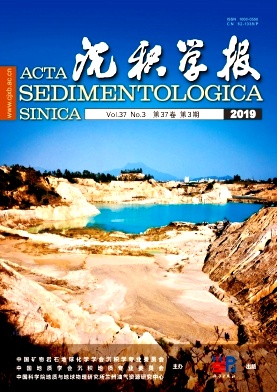Reservoir Modeling of the Lower Cambrian Xiaoerblak Formation in the Sugaitblak Section and Its Significance for Exploring Regions in the Tarim Basin, NW China
doi: 10.14027/j.issn.1000-0550.2018.142
- Received Date: 2018-04-02
- Rev Recd Date: 2018-05-25
- Publish Date: 2019-06-10
-
Key words:
- Tarim Basin /
- Sugaiteblak Section /
- Xiaoerblak Formation /
- dolomite /
- reservoir modeling
Abstract: Studying the quality and distribution law of the Xiaoerblak Formation (Fm.) is significant for guiding the exploration of Cambrian sub-salt area. The quality and scale of the reservoir are the main factors causing the restriction of further exploration in the Xiaoerblak Fm. of the Lower Cambrian, Tarim Basin. This study takes the Sugaiteblak Section in the Keping area as an example. Based on the detailed description, physical properties analysis, and three-dimensional (3D) reservoir geological modeling in the Xiaoerblak Fm., we found that microbial dolomite (including laminate, thrombolite, stromatolite, and microbial framework dolomite), dolarenite, and muddy to micritic dolomite are the main rock types indicating the sedimentary characteristics of the ramp. Vugs, intergranular dissolved pores (or intercrystalline pores), and framework pores are the main reservoir spaces, which have an obvious correlation with lithofacies. Among them, dolarenite and microbial framework dolomite are the most favorable reservoir rocks. Generally speaking, the reservoir has characteristics of middle-high porosity and middle-low permeability. The scale development of the reservoir was controlled by a high frequency sequence and sedimentary microfacies, and microbial mounds and shoals in the middle ramp around the ancient uplift are the favorable facies zones.
| Citation: | ZHENG JianFeng, CHEN YongQuan, HUANG LiLi, YAN Wei, NI XinFeng, LI BaoHua, Guo XiaoYan. Reservoir Modeling of the Lower Cambrian Xiaoerblak Formation in the Sugaitblak Section and Its Significance for Exploring Regions in the Tarim Basin, NW China[J]. Acta Sedimentologica Sinica, 2019, 37(3): 601-609. doi: 10.14027/j.issn.1000-0550.2018.142 |






 DownLoad:
DownLoad: